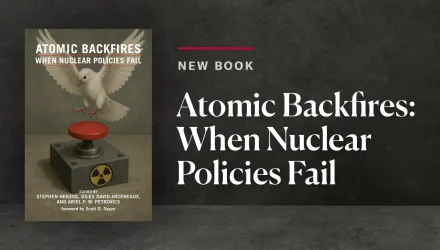ABSTRACT
A robust nonproliferation regime has contained the spread of nuclear weapons to just nine states. Yet, emerging and disruptive technologies are reshaping the landscape of nuclear risks, presenting a critical juncture for decision makers. This article lays out the contours of an overlooked but intensifying technological arms race for nuclear (in)visibility, driven by the interplay between proliferation-enabling technologies (PETs) and detection-enhancing technologies (DETs). We argue that the strategic pattern of proliferation will be increasingly shaped by the innovation pace in these domains. Artificial intelligence (AI) introduces unprecedented complexity to this equation, as its rapid scaling and knowledge substitution capabilities accelerate PET development and challenge traditional monitoring and verification methods. To analyze this dynamic, we develop a formal model centered on a Relative Advantage Index (RAI), quantifying the shifting balance between PETs and DETs. Our model explores how asymmetric technological advancement, particularly logistic AI-driven PET growth versus stepwise DET improvements, expands the band of uncertainty surrounding proliferation detectability. Through replicable scenario-based simulations, we evaluate the impact of varying PET growth rates and DET investment strategies on cumulative nuclear breakout risk. We identify a strategic fork ahead, where detection may no longer suffice without broader PET governance. Governments and international organizations should accordingly invest in policies and tools agile enough to keep pace with tomorrow's technology.








